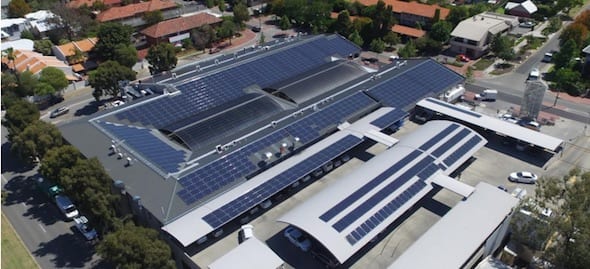Western Australia’s commercial solar market got a boost this week, after the state’s largest rooftop solar system, a 312kW array on the Broadway Fair Shopping Centre in the Perth suburb of Nedlands, was launched on Thursday.
The system, made up of a total of 948 PV panels supplied by SunEdison and installed by Infinite Energy, is expected to account for more than 30 per cent of the shopping centre’s electricity needs – almost 500,000kWh a year.

According to a statement, the installation followed a major structural upgrade to the the shopping centre which saw its entire roof replaced.
“We were looking for solution to grow income as well as provide a buffer against escalating costs,” said Broadway Fair general manager Paul Avon-Smith.
“Sun Edison and Infinite Energy presented us with a solar solution that made strong economic sense with the environmental benefits of reduced carbon emission being a nice bonus.”
Avon-Smith said the big job – which required around 6km of wiring – was made exceptionally simple by the project team, who delivered it on budget.
Sun Edison, meanwhile, thinks the project could help deliver the message to more businesses in Western Australia – and perhaps around the country – that clean energy makes real and immediate economic sense.
“People are catching on in a big way that going solar is not only good for the environment, but translates into real cost savings,” said Sun Edison’s head of commercial and industrial sales, Nick Brass.
A boost to momentum in Australia’s commercial solar market – which has been slow burner compared to the residential market, and to commercial markets in comparable countries – would be welcomed by the local solar industry, which has so far endured the worst start to a year since 2012, in terms of growth.
As we reported in mid-February, PV growth in January 2016 faired even worse than in “a depressed” 2015, according to data from solar analysts SunWiz, with volumes falling back across every significant size bracket excluding the 7-10kW range and for systems 2.5kW and less.
This article was originally published on RenewEconomy sister site One Step Off the Grid. To sign up to the weekly newsletter click here









